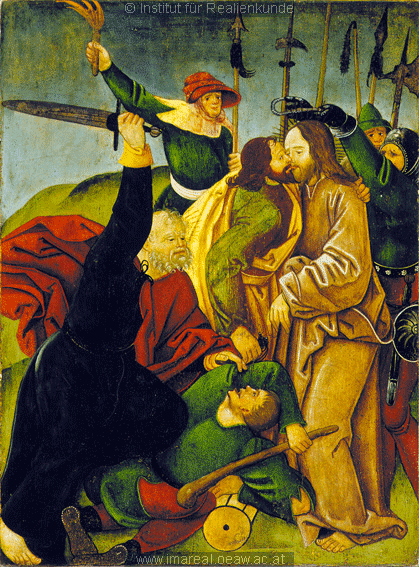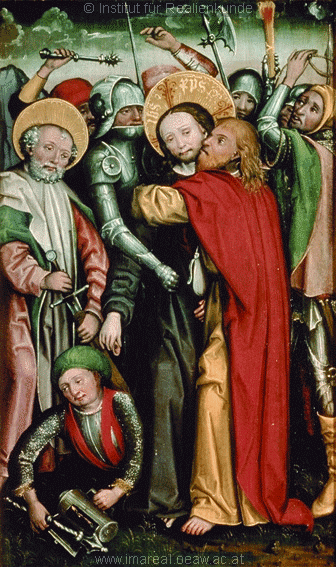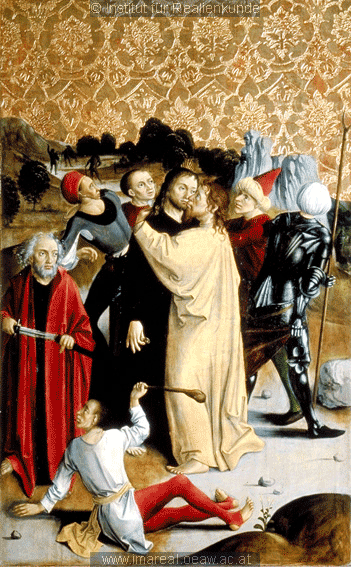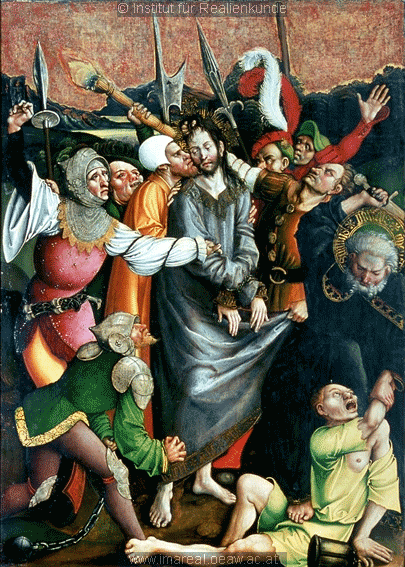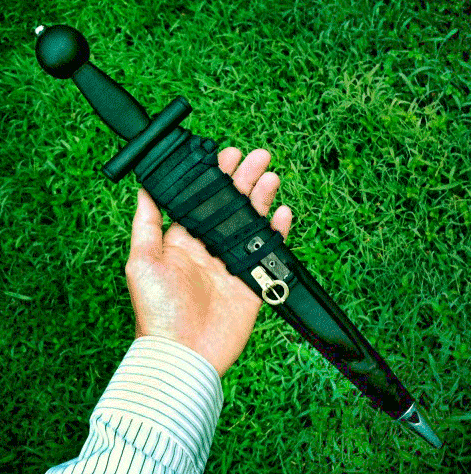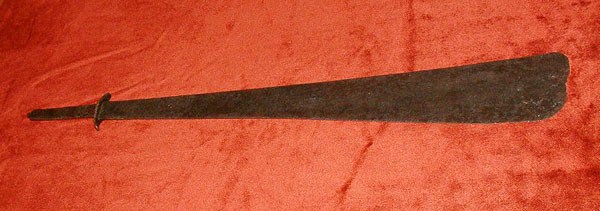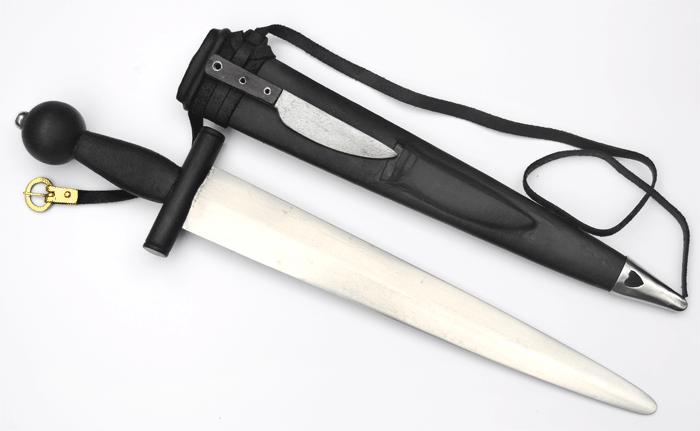My son turns 5 next week, and has often asked for a "real" sword of his own. He's getting one for this milestone! Thinking about the small scale, I took my general inspiration from the various swords of St. Peter and other Austrian/German weapons of the late 15th/early 16th c. The blunted blade is from Atlanta Cutlery. I could have mounted it with steel cross and pommel but I wanted this to feel like a sword, not a dagger. I also wanted the balance to help in keeping the point down for safety reasons. That argued for wooden cross and pommel and also demanded "blackening" of those parts. The balance is a couple of inches below the cross. True to Peter's various utilitarian weapons in the paintings, I wanted to include a toy by-knife and appropriate scabbard and suspension. The result is below. More photos as I'm able to get them.
